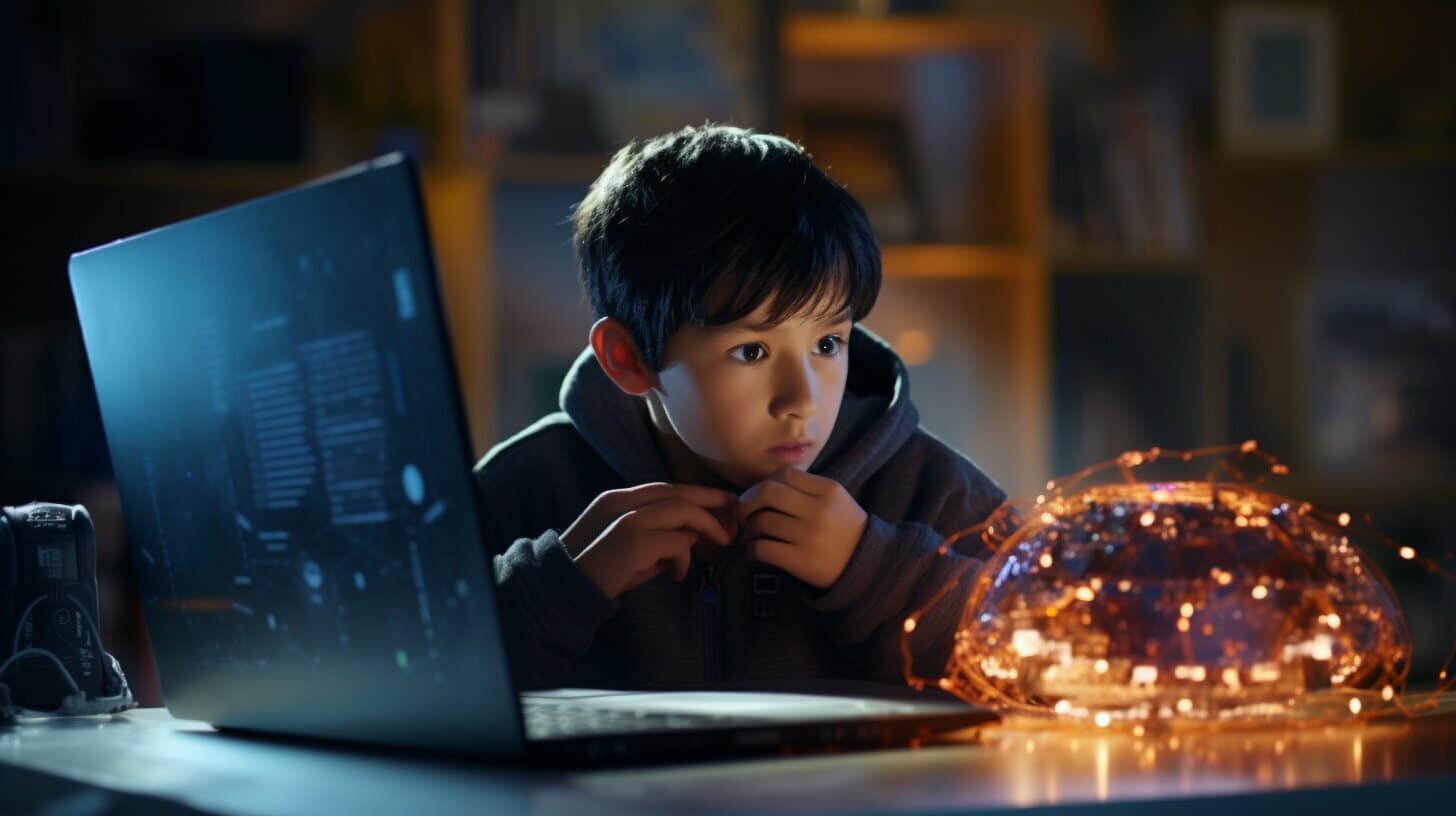Understanding the Basics: What is a Computer?
If you’re curious about computers and want to learn more, you’ve come to the right place. Here, we’ll help you understand the basics of what a computer is and how it works.
A computer is an electronic device that can store, process, and communicate information. It’s made up of different parts, both hardware and software, that work together to make it function.
The Hardware
The hardware refers to the physical components of a computer, such as the monitor, keyboard, and CPU. The monitor is the screen where you can see what’s happening on the computer. The keyboard is where you can type in words and commands, and the CPU is the central processing unit that runs the computer’s programs and performs calculations.
The Software
The software is the digital component of a computer, consisting of programs and code that tell the computer what to do. This is what enables you to use the computer for various tasks, such as browsing the internet, using apps, or playing games.
Understanding the different parts and functions of a computer is the first step towards computer literacy. With this knowledge, you can explore and experiment with different software and hardware to learn more about this amazing technology.
Exploring Computer Parts and Their Functions
Now that you understand the basics of what a computer is, let’s dive deeper into its parts and how they work together to make it function.
A computer is made up of various components, including the monitor, keyboard, mouse, and CPU (central processing unit). The monitor displays the information processed by the CPU, while the keyboard and mouse allow you to input commands and interact with the computer.
The CPU is like the brain of the computer. It processes all the information and instructions, allowing the computer to perform various tasks. It is made up of the motherboard, which controls communication between all the other components, and the processor, which does most of the heavy lifting.
| Component | Function |
|---|---|
| Monitor | Displays information processed by the CPU |
| Keyboard and Mouse | Input commands and interact with the computer |
| CPU | Processes information and instructions for the computer to perform tasks |
Understanding these parts and their functions is essential in building a good foundation for computer literacy. Encourage your child to explore and learn by interacting with the various parts of the computer.
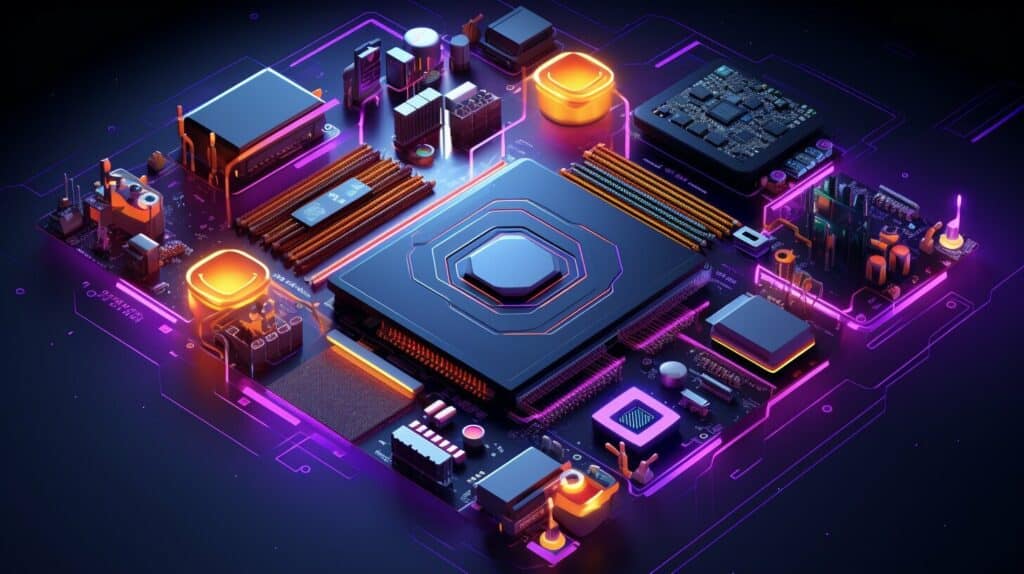
By familiarizing themselves with the computer’s various components, they will be better equipped to troubleshoot issues and navigate the digital world. In the next section, we’ll introduce your child to the different types of computers they may encounter.
Getting to Know Different Types of Computers
Computers come in various shapes and sizes, and it’s important to understand their unique features and purposes. In this section, we’ll introduce you to different types of computers you may encounter.
| Type of Computer | Description |
|---|---|
| Desktop | A stationary computer that sits on a desk. It typically has more power and storage than other types of computers and is great for gaming, graphic design, or other intensive tasks. |
| Laptop | A portable computer that you can easily carry around. It’s great for school, work, or browsing the web on the go. Laptops can be just as powerful as desktops, but they tend to have less storage space. |
| Tablet | A flat, touch-screen device that you can hold in your hands. Tablets are great for reading, watching videos, or browsing the web. They are typically less powerful than laptops or desktops, but they’re very easy to use. |
| Smartphone | A pocket-sized device that can do many things, including making phone calls, sending texts, browsing the web, and running apps. Smartphones are becoming more powerful each year, and many people use them as their primary device for internet access. |
As you can see, each type of computer has its strengths and weaknesses, but they all serve different purposes. Knowing which type of computer to use for a specific task will help you get the most out of your technology.
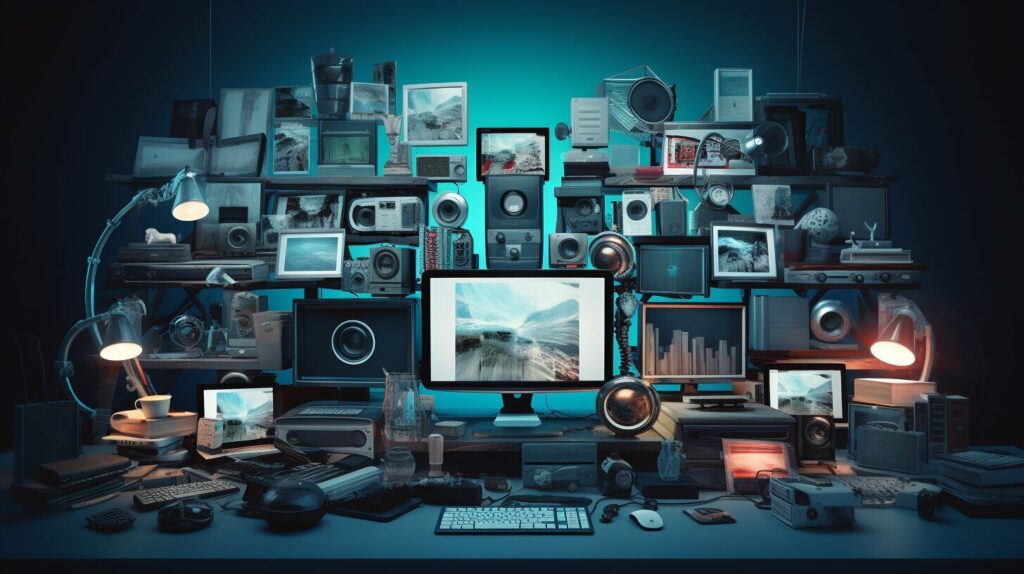
Image Source: seowriting.ai
The Wonders of Software: Apps, Programs, and Games
Software enhances the computer experience by providing tools and entertainment. Understanding the difference between apps, programs, and games can help your child make the most of their computer time.
Apps: Short for “applications,” apps are small programs that perform specific tasks. They are designed for mobile devices and can be downloaded from app stores. For example, a weather app provides current forecasts and alerts.
Programs: Programs are larger software packages that perform more complex functions. They are typically installed on a computer and require more memory and processing power. Examples of programs include word processors, photo editors and video makers.
Games: Games are a type of software that provides fun and entertainment. They are often designed for specific age groups and interests. Games can be played on a computer, console, or mobile device. Examples include puzzle games, racing games, and simulation games.
Encourage your child to explore and use different types of software. It’s a great way to learn and have fun.

Software is a great tool for learning and entertainment. With the right programs and apps, your child can unleash their creativity and curiosity.
Connecting the Dots: How Computers Work with the Internet
Now that you understand the basics of a computer, it’s time to explore how it connects with the internet. The internet is a vast network of computers that allows people all around the world to communicate and share information.
When you open a web browser on your computer, it sends a request to a server, which then sends the information back to your computer, displaying it on your screen. This is how you’re able to access websites, watch videos, and connect with others online.
It’s important to remember that the internet can be a wonderful resource, but it also comes with potential risks. Always make sure to use the internet safely and responsibly. Don’t share personal information with strangers, and be careful when downloading files or clicking on links.

One way to stay safe online is to use antivirus software, which helps protect your computer from viruses and malware. You should also make sure to use strong, unique passwords for all your online accounts, and avoid using public Wi-Fi networks for sensitive activities like online shopping or banking.
By understanding how computers connect with the internet, you can unlock a world of knowledge and opportunities. Just remember to always stay safe and use the internet responsibly.
Fun Activities to Explore Computer Technology
If you want to help your child explore the world of computer technology in a fun and engaging way, there are plenty of activities and projects you can try. These activities will not only teach your child new computer skills but also develop their creativity and problem-solving abilities.
1. Create a Digital Artwork
Using software such as Paint or Photoshop, your child can create their own digital artwork. They can experiment with different tools and techniques, like layering, blending, and coloring. Encourage them to let their imagination run wild and create something that speaks to their unique style and personality.
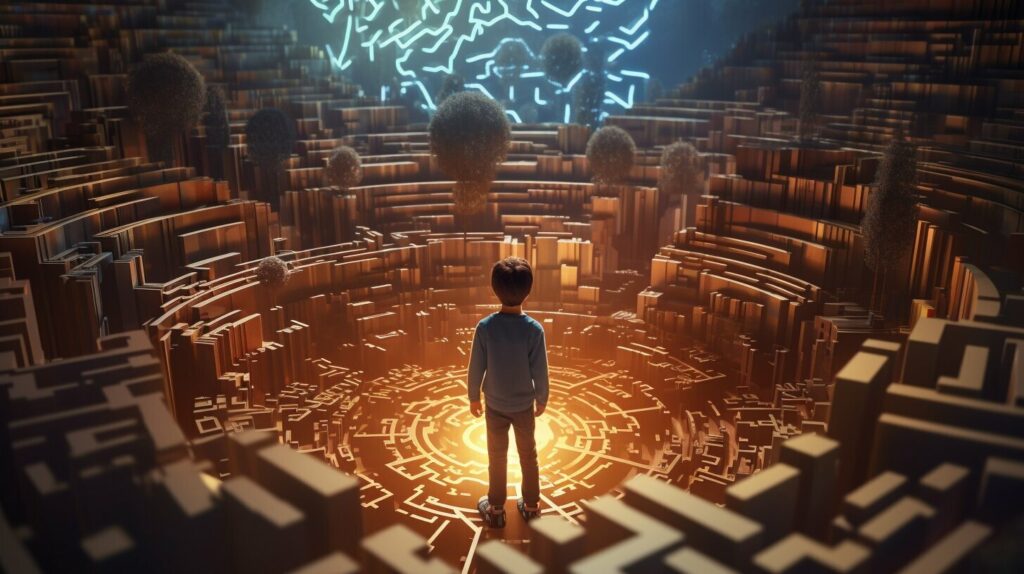
2. Build a Simple Game
With platforms like Scratch, your child can build their own simple games from scratch. They can create characters, backgrounds, and rules, and even add sound effects. This is a great way for them to learn basic programming concepts while having fun.
3. Solve Coding Puzzles
There are many websites and apps that offer coding puzzles and challenges for kids. These puzzles will help your child develop their logical reasoning and problem-solving skills. They can work through puzzles on their own or with a friend for added fun.
4. Take Apart an Old Computer
If you have an old computer lying around, your child can take it apart to see how all the parts fit together. This is a great way for them to learn about the different hardware components of a computer. Just make sure to supervise them and handle any potentially hazardous materials.
5. Create a Stop-Motion Animation
Your child can use software like Stop Motion Studio to create their own stop-motion animations. They can use objects from around the house to create characters and backgrounds, and then animate them frame by frame. This is a great way for them to learn about storytelling and cinematography.
These are just a few examples of the many fun and creative ways your child can explore computer technology. By making learning a fun and hands-on experience, you can encourage them to develop a lifelong love for technology and all it can offer.
Recommended Resources for Further Learning
Learning about computer technology can be an exciting journey for kids! If you’re looking for resources to help your child continue exploring, here are some great options:
Books:
| Book Title | Description |
|---|---|
| How Computers Work: The Evolution of Technology, 10th Edition | This informative and engaging book provides a comprehensive look at the history and inner workings of computers. It’s perfect for young readers who want to learn more about the technology that powers our world. |
| My First Coding Book | This fun and interactive book introduces kids to coding concepts in a simple and accessible way. It’s a great way to get started with programming! |
Websites:
- Code.org – Offers free coding courses and games for kids of all ages.
- Scratch – A free programming language and online community for creating interactive stories, games, and animations.
- National Geographic Kids: Computers – Provides articles, videos, and quizzes to help kids learn more about computers and technology.
These resources are just a starting point – there are countless other books, websites, and tools out there that can help kids build their computer literacy skills. Keep encouraging your child to explore and learn, and they’ll be a tech pro in no time!

Addressing Common Questions and Concerns
As a parent or educator, you may have some concerns or questions about introducing your child to computer technology. Here are some common queries and their answers:
How young is too young to introduce my child to computers?
There is no definitive age for when a child should start learning about computers. However, children as young as two or three years old can benefit from simple computer programs that teach basic skills. It’s essential to supervise young children’s computer use and ensure that they are using appropriate software.
Will my child become addicted to computer games?
It’s natural for children to enjoy playing computer games, but it’s essential to monitor their screen time and set boundaries around how much time they spend on the computer. Encourage your child to engage in other activities, such as sports, hobbies, or spending time with friends and family.
Is it safe for my child to use the internet?
The internet can be a valuable resource for kids, but it’s crucial to teach them about online safety. Make sure they understand the dangers of sharing personal information, talking to strangers, and clicking on suspicious links. Monitor their internet use and use parental controls to ensure their safety.
How can I support my child’s interest in computer technology?
Encourage your child to explore different aspects of computer technology, such as programming, graphic design, or robotics. Provide them with educational resources and opportunities to learn, such as coding classes, technology camps, or DIY projects. Celebrate their achievements and encourage them to pursue their interests.
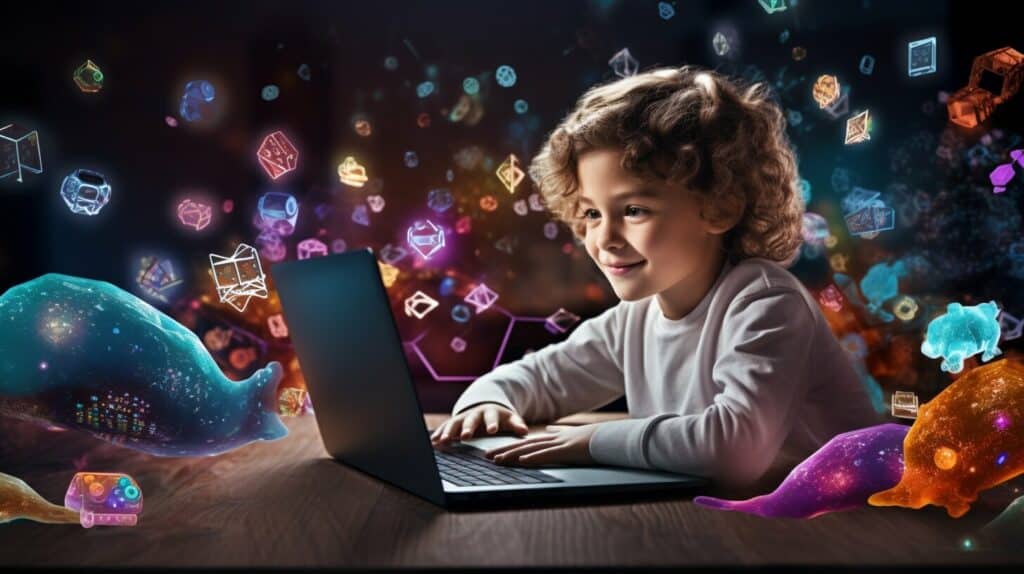
By addressing common questions and concerns, you can feel confident in introducing your child to computer technology and supporting their ongoing learning and development.
Conclusion
Now that you have a better understanding of computer technology, you can help your child embark on a fun and educational journey towards computer literacy. By introducing them to computer parts and functions, different types of computers, software, and the internet, you’ll expand their knowledge and creativity.
Don’t forget to also encourage them to use technology responsibly and safely. Always supervise their internet usage and teach them about online privacy and security.
With the recommended resources and fun activities provided in this article, you can continue to support your child’s interest and development in computer technology. Keep exploring and have fun!
Can I Use the Same Explanation to Teach a Child About Google and Computers?
When teaching a child about Google and computers, a simple guide to explain google can be helpful. Start by explaining that Google is like a giant library that contains information on almost everything. It helps us find answers to questions by searching through all the books and websites on the internet. Computers are the tools we use to access Google and other websites. By using relatable analogies and emphasizing the helpfulness of Google, children can grasp the concept more easily.
FAQ
Q: What is a computer?
A: A computer is a machine that can perform various tasks by following instructions. It consists of hardware components, such as a monitor, keyboard, mouse, and CPU, as well as software programs that enable it to perform specific functions.
Q: What are the different parts of a computer and what do they do?
A: A computer is made up of several parts, including the monitor (which displays information), keyboard (used for inputting data), mouse (used for navigation), and CPU (the brain of the computer that processes information).
Q: What are the different types of computers?
A: There are various types of computers, including desktops, laptops, tablets, and smartphones. Desktops are stationary computers with more processing power, while laptops are portable and convenient for on-the-go use. Tablets and smartphones are touchscreen devices that offer versatility and mobility.
Q: What is the difference between apps, programs, and games?
A: Apps, programs, and games are all types of software that run on a computer. Apps are usually designed for specific purposes, such as productivity or entertainment. Programs are more general software applications used for various tasks. Games are interactive programs that provide entertainment and often involve challenges or puzzles.
Q: How do computers connect to the internet?
A: Computers connect to the internet using Wi-Fi or Ethernet cables. Wi-Fi allows wireless connectivity, while Ethernet cables provide a direct connection. Once connected, computers can access websites, send emails, and interact with various online services.
Q: What activities can help children learn more about computers?
A: Engaging activities, such as coding games, building simple robots, or creating digital art, can help children explore and understand computer technology. These hands-on experiences make learning about computers fun and interactive.
Q: Are there any resources to help children learn more about computer technology?
A: Yes, there are many books, websites, and educational tools available that are specifically designed for children to learn more about computer technology. These resources provide interactive lessons, tutorials, and projects to support their learning journey.
Q: What are common questions or concerns children may have about computers?
A: Common questions or concerns children may have about computers include topics like internet safety, online privacy, and the fear of breaking the computer. It’s important to address these concerns and provide age-appropriate explanations to alleviate any worries.





